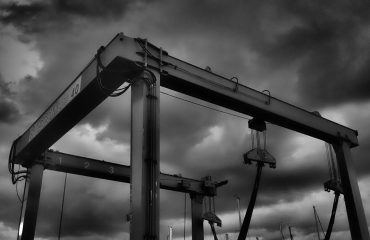In today’s interconnected world, efficient logistics are the lifeblood of global commerce. Successfully navigating the complexities of moving goods across continents requires a sophisticated understanding of both maritime and land logistics, and a strategic approach to integrating them seamlessly. This post delves into key strategies for optimizing your supply chain, maximizing efficiency, and minimizing costs.
1. Optimizing Maritime Transportation: Charting a Course to Efficiency
Maritime transport remains the backbone of global trade, offering cost-effective solutions for moving large volumes of goods over long distances. However, optimizing maritime logistics requires careful planning and consideration of several factors. Choosing the right vessel type – from container ships to bulk carriers – is crucial, depending on the nature and volume of cargo. Route optimization, leveraging real-time tracking and predictive analytics to minimize transit times and avoid potential delays, is equally important. Furthermore, understanding and mitigating risks associated with weather patterns, port congestion, and geopolitical instability are essential components of a robust maritime strategy. Efficient port operations, including streamlined customs procedures and effective cargo handling, significantly impact overall transit time and cost. Finally, strategic partnerships with reliable shipping lines and agents are vital for ensuring smooth operations and mitigating potential disruptions.
2. Land Logistics: The Final Mile and Beyond
While maritime transport handles the bulk of long-distance movement, land logistics are critical for the “last mile” delivery and efficient distribution within a country. This involves a complex interplay of trucking, rail, and potentially air freight, depending on the specific needs and geographical constraints. Effective land logistics strategies hinge on factors like route planning (considering factors such as road conditions, traffic patterns, and potential delays), warehouse management (optimizing storage space, inventory control, and order fulfillment), and last-mile delivery optimization. The choice of transportation mode – trucking for flexibility, rail for bulk transport, or air freight for speed – depends on the urgency, cost sensitivity, and volume of goods. Implementing advanced technologies like GPS tracking, telematics, and route optimization software can significantly improve efficiency and transparency throughout the land logistics process. Furthermore, strong relationships with trucking companies, rail operators, and warehousing providers are essential for ensuring reliable and timely delivery.
3. Integrating Maritime and Land Logistics: A Seamless Transition
The true power of efficient logistics lies in the seamless integration of maritime and land transport. This requires careful coordination and planning at every stage of the supply chain. Effective communication and information sharing between maritime and land logistics providers are crucial to avoid delays and ensure smooth transitions. Real-time tracking and visibility across the entire journey allow for proactive problem-solving and efficient resource allocation. Utilizing a Transportation Management System (TMS) can streamline the entire process, providing a centralized platform for managing shipments, tracking progress, and optimizing routes. Furthermore, incorporating advanced technologies like blockchain can enhance transparency and security throughout the supply chain, improving traceability and reducing the risk of fraud.
4. Risk Management in Maritime and Land Logistics: Mitigating Potential Disruptions
Global trade is inherently susceptible to various risks, including geopolitical instability, natural disasters, port congestion, and theft. A robust risk management strategy is essential for mitigating potential disruptions and ensuring business continuity. This includes developing contingency plans for various scenarios, implementing robust security measures to protect goods in transit, and obtaining appropriate insurance coverage. Proactive monitoring of global events and potential disruptions is critical for identifying and addressing potential threats early on. Diversifying transportation routes and suppliers can also help to reduce reliance on single points of failure and mitigate the impact of unexpected events. Regularly reviewing and updating risk assessments is crucial to ensure the effectiveness of your risk management strategy in the face of evolving challenges.
5. Technology’s Role in Optimizing Maritime and Land Logistics
Technology is revolutionizing the logistics industry, offering innovative solutions for improving efficiency, transparency, and cost-effectiveness. The use of GPS tracking, telematics, and route optimization software significantly enhances visibility and control over shipments. Big data analytics provides valuable insights into historical trends and allows for data-driven decision-making. Blockchain technology enhances transparency and security, while artificial intelligence (AI) and machine learning (ML) can be leveraged for predictive maintenance, demand forecasting, and route optimization. The adoption of these technologies is crucial for staying competitive in today’s fast-paced and demanding global marketplace. Investing in advanced technology solutions can lead to significant improvements in efficiency, reduced costs, and improved customer satisfaction.
By implementing these strategies and leveraging the power of technology, businesses can optimize their maritime and land logistics operations, creating a truly seamless and efficient global supply chain. This leads to improved profitability, enhanced customer satisfaction, and a stronger competitive advantage in the global marketplace.
SEO Tags:
Maritime Logistics, Land Logistics, Supply Chain Management, Global Trade, Logistics Optimization




